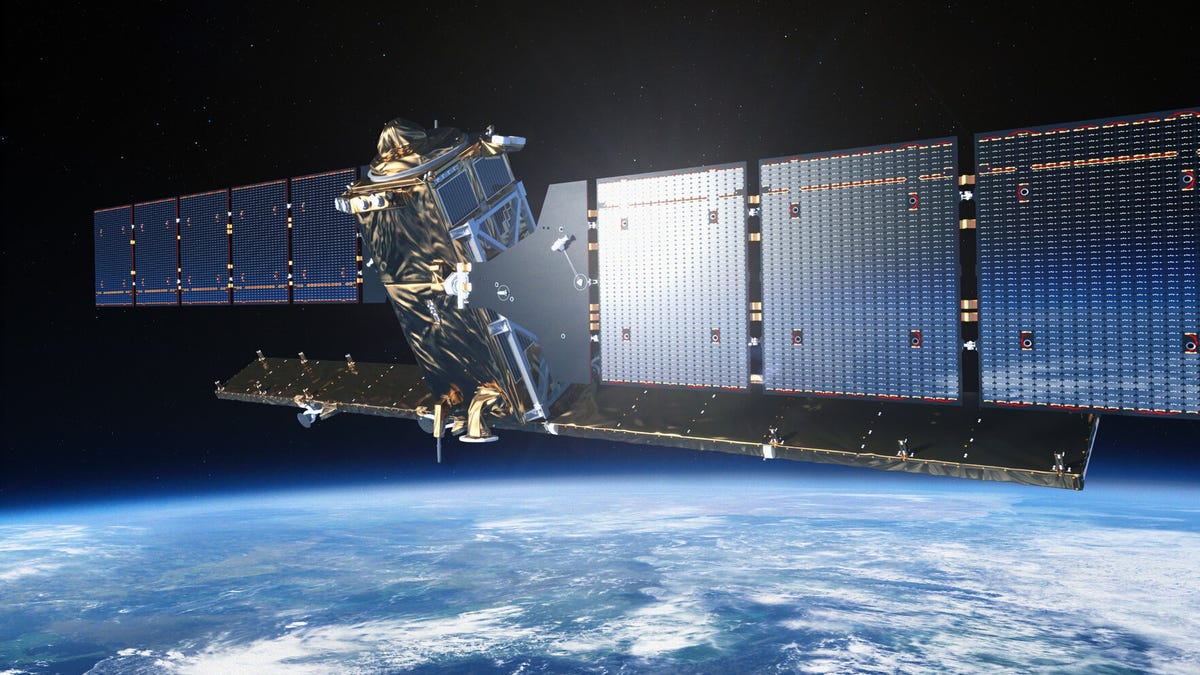Earth-Watching Satellite Barely Escapes Collision With Russian Space Debris
It was a nail-biter.

Sentinel-1, which is made up of the 1-A and 1-B satellites, is part of the Copernicus family of satellites.
An important Earth-observing satellite just experienced a heart-pounding near-miss as it moved to avoid space debris. The European Space Agency detailed the Sentinel-1A satellite's dramatic dodge in a series of tweets on Wednesday, pointing to a 2021 Russian missile test that scattered chunks of a defunct Cosmos satellite around in orbit.
On Monday, Sentinel-1A performed a set of emergency maneuvers to avoid what ESA called a "high-risk collision."
"Collision avoidance monitoring is unfortunately routine work at Mission Control and our teams are well-practiced in reacting to high-risk events," ESA Operations said in a tweet. "This near head-on collision was however unique; the situation evolved rapidly, was tricky to avoid, AND we had less than 24 hours warning."
On Monday, for the first time, we performed a set of manoeuvres to avoid a high-risk collision w. #SpaceDebris created in the #Cosmos1408 anti-satellite test last year.
— ESA Operations (@esaoperations) May 18, 2022
This was a difficult #CollisionAvoidance manoeuvre.👏👏to our #Sentinel1A Control Team & Space Debris Office pic.twitter.com/dl5OnTAlON
Sentinel-1A is part of ESA's Earth-monitoring Copernicus program. The satellite detects and tracks oil spills, maps sea ice, monitors surface changes and provides data to help with responses to natural disasters.
The satellite moved to escape a debris fragment that was several centimeters in diameter. Impact from even a small piece of debris can damage a satellite. ESA altered Sentinel-1A's orbit by 460 feet (140 meters). "Even though the Cosmos satellite orbited more than 200km below Sentinel-1, the energy released during its explosion pushed fragments of it all the way up, intersecting our orbit," ESA wrote. The team had mere hours to plan and execute the maneuvers.
Sentinel-1A is safe for now, but ESA called out the "devastating risks to the whole space environment from the (intentional) creation of space debris." At the time of the Russian missile test, the US described the action as reckless.
The problem of space debris is getting worse and poses a danger to not only satellites, but also to the human-occupied space station. The International Space Station sometimes must dodge junk. The destruction of Cosmos created more than 1,500 new pieces of debris. Sentinel's close call won't be the last.

